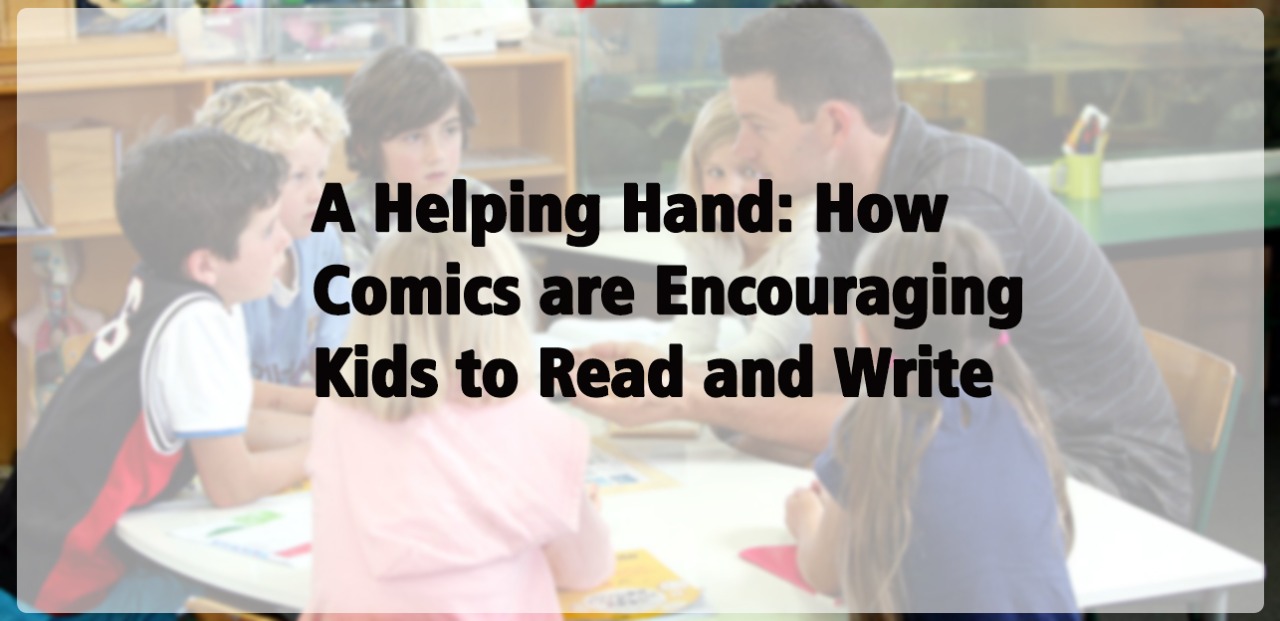A Helping Hand: How Comics are Encouraging Kids to Read and Write
Have you ever noticed how many young people don’t know how to read or write properly? At least two million adults in America are functionally illiterate, which makes it hard for them to get jobs, read their children bedtime stories or even take care of themselves. Fortunately, there’s an interesting and effective solution to this problem: comic books! These illustrated pamphlets make reading and writing fun and easy, and kids respond incredibly well to them.
The importance of storytelling
When a child is introduced to reading, they naturally want to be read aloud from the story. They see the words come alive in their mind as they’re being spoken. The same is true for writing. When kids write down the story that’s playing in their head, it feels like magic when it comes out of the pencil onto paper. This type of storytelling is called ‘dialogic’ because there’s a dialogue between author and audience. Dialogic stories help young readers develop literacy skills by providing them with an interactive experience where they can participate in the storytelling process. Dialogics also provide children with a sense of accomplishment because they’ve created something tangible from their imagination that was previously only in their head.
Learning how to read by listening
A lot of kids learn how to read by listening, which is a great technique because it allows you to get the gist of what’s happening in the story without understanding all of the words. If you’re not sure how your child is learning or want them to start reading sooner rather than later, this might be a good method for you.
Jump-starting your child’s literacy skills through comics
Comics can be a fantastic way to jump-start your child’s literacy skills. Here are some tips on how reading comics with kids can help them develop the skills they need to become fluent readers and writers.
- The comic form is exciting, so it’s a great way to encourage a reluctant reader. It also offers plenty of opportunities for parents and children alike to voice their own interpretations of the events in the story.
- Comic books often have pictures that convey more than words, which means that it’s easier for kids who struggle with reading comprehension or disabilities like dyslexia or autism spectrum disorder (ASD) to decode what they read or just enjoy what they see in the book.
Comic books can be used as self-help books, too
Comics can be used as self-help books, too. In fact, many of the most popular comic books today are aimed at helping readers with a variety of problems. For instance, The Amazing Simba Capeman is about a young man who has super powers and must balance his superhero life with his personal life. This series is aimed at children but also helps young adults deal with difficult issues like addiction or bullying.
Limiting screen time through comics
Many times, kids will read comics for hours on end. This can be a bad thing because when they do not get enough sleep, it can affect their mood, memory and immune system. Parents should find other ways for their children to decrease the amount of time they spend looking at screens so that they have time to play outside or read physical books.
Getting started with comics at home
If you’re looking for a way to encourage your child’s reading and writing skills, comics might be just the solution.


Add Comment